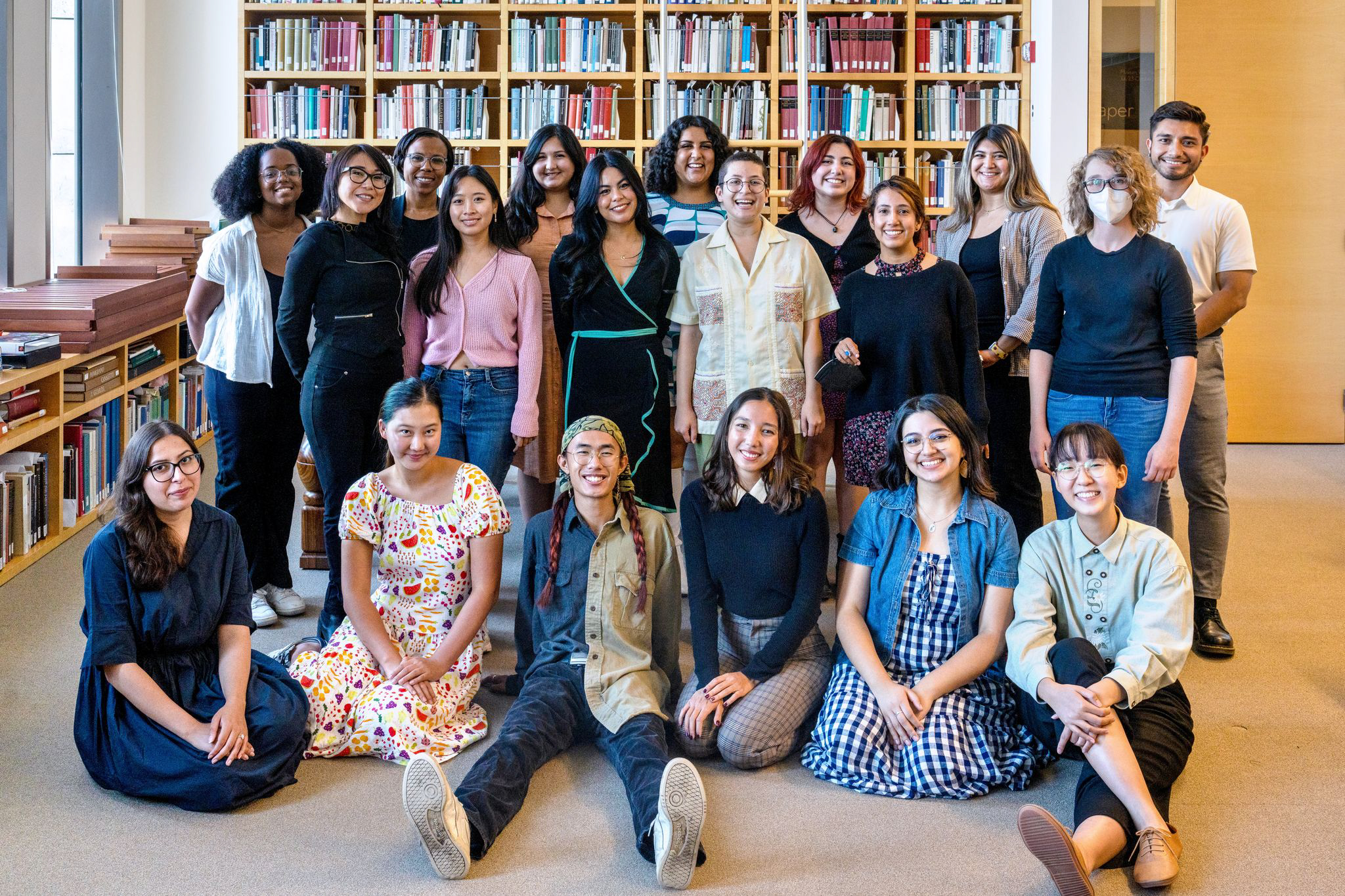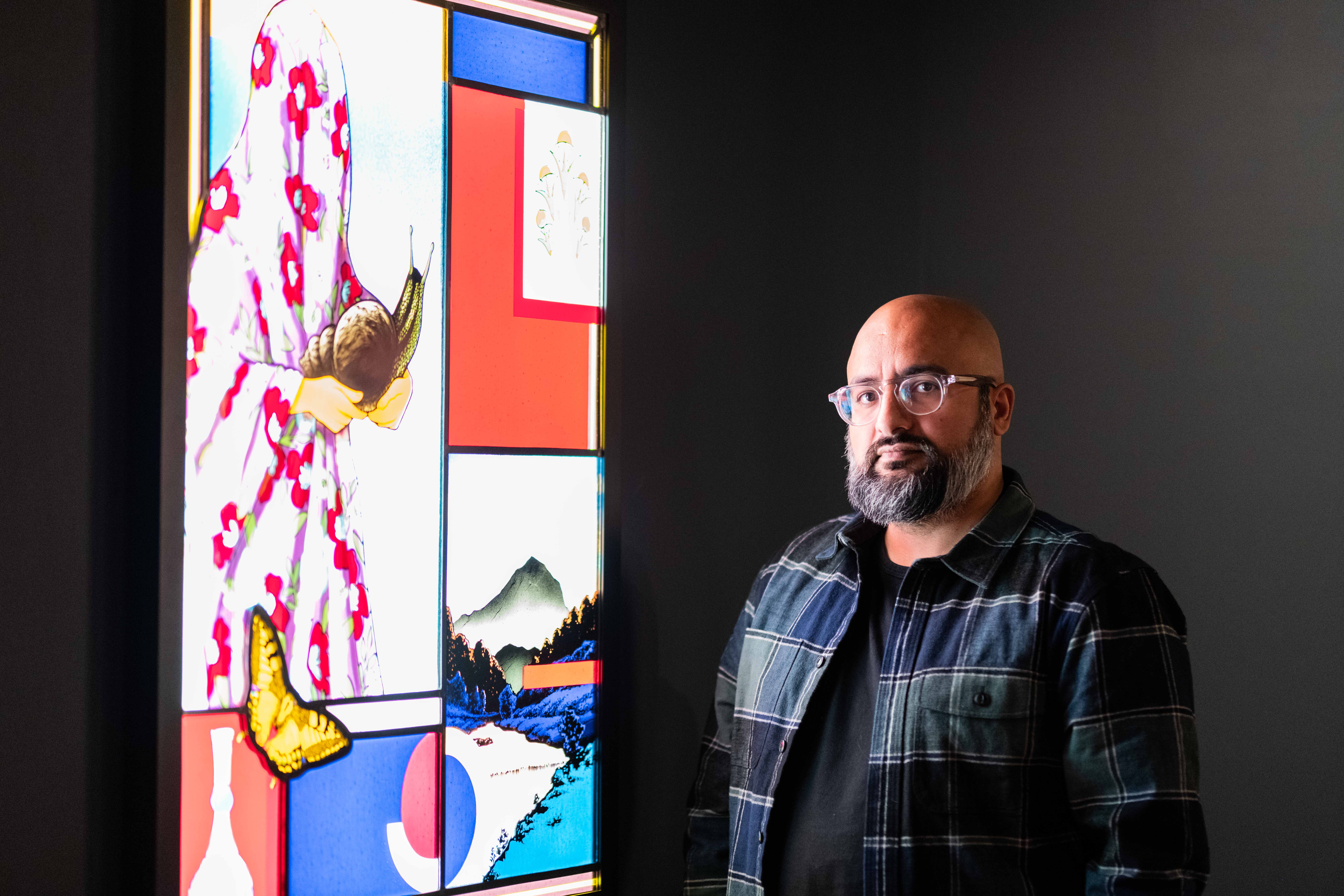Getty Center unveils new exhibition, ‘William Blake: Visionary’
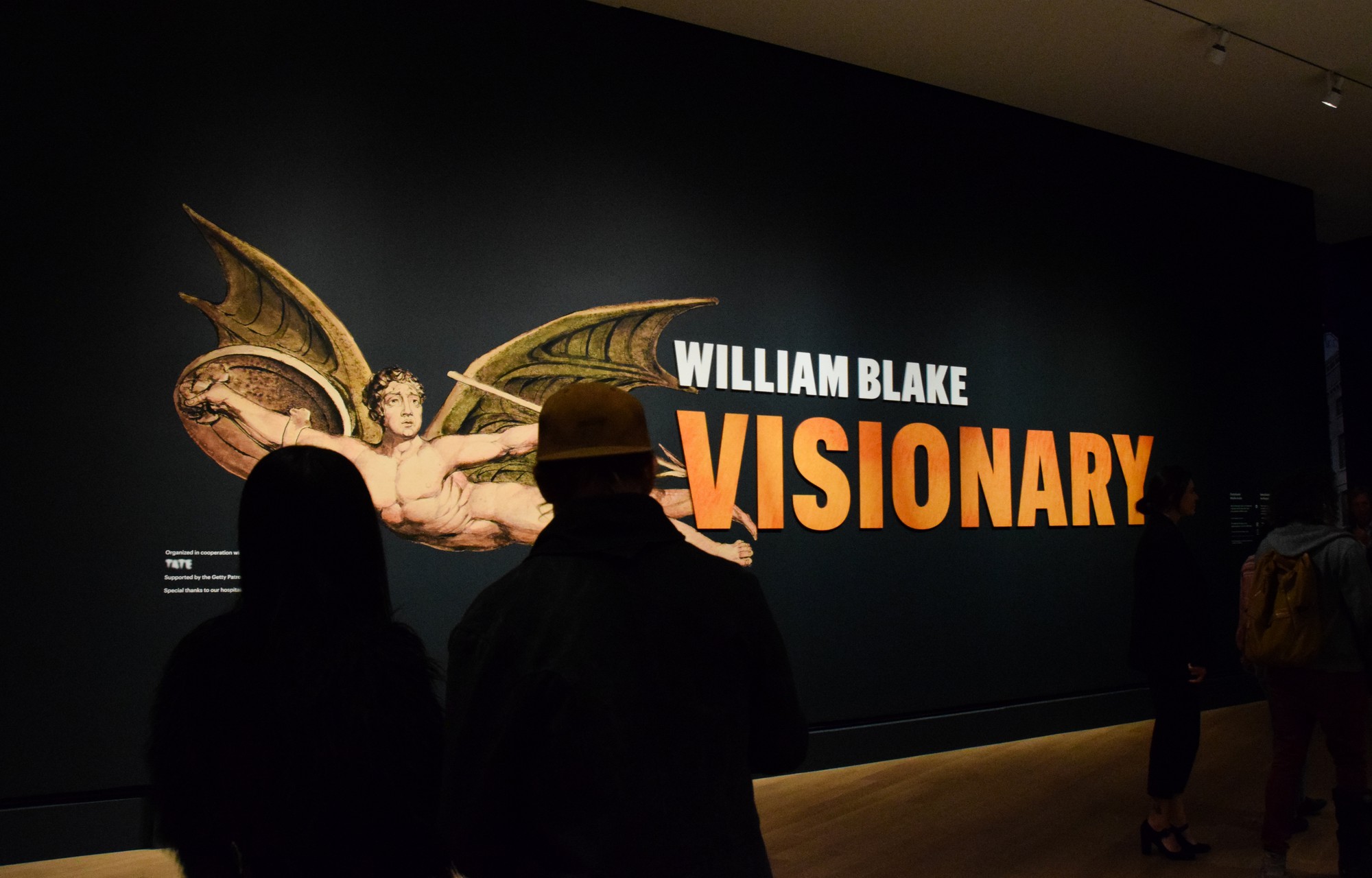
An enlarged version of William Blake’s “Satan Exulting over Eve” is displayed on a Getty Center wall. The museum’s newest exhibit, “William Blake: Visionary,” opened its doors for the first time last night during a private reception. (Myka Fromm/Assistant Photo editor)
By Avery Poznanski
Oct. 17, 2023 4:10 p.m.
This post was updated Oct. 19 at 9:26 p.m.
Visionary tales and texts are lighting up the Getty Center.
On Monday night, the Getty Center unveiled the “William Blake: Visionary” exhibition to an audience for the first time during a private reception. Senior curator of drawings Julian Brooks, assistant curator of drawings Edina Adam and director of the Getty Museum Timothy Potts helped welcome guests to the exhibit through their pre-reception remarks, delivered while guests enjoyed light refreshments in the Getty Center restaurant and lobby.
“(Tonight is) the first major international exhibition of Blake’s work on the West Coast, bringing together over a hundred of his works, including many of his finest and most renowned series,” Potts said.
Many of Blake’s most famous works were on display for art enthusiasts, academics and onlookers alike. At the opening of the exhibit was a small self-portrait of the 18th-century poet and artist, sketched in graphite. The drawing’s caption noted the different perspectives of Blake’s peers – some viewed him as a genius, others as nothing more than a wild eccentric.
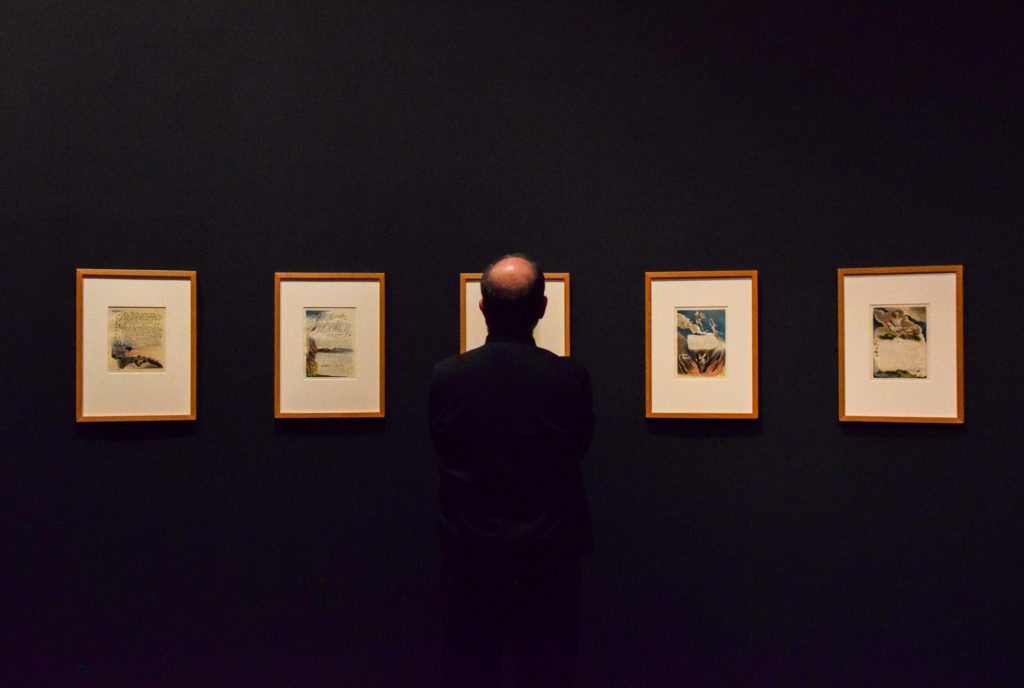
[Related: Q&A: Stop-motion film ‘The Inventor’ presents Leonardo da Vinci to modern audiences]
On the first wall of the exhibition, engraved plates were presented in a series called “Illustrations of the Book of Job.” Sponsored by the 19th-century painter John Linnell, Blake’s series of compositions combined inscriptions and engraved prints to illustrate the biblical story. Several of the engravings were on display to Getty Center guests, who closely observed the small images. In her opening remarks, Adam expressed the breadth of inspiration, including the natural and the spiritual, behind Blake’s works.
“What this exhibition sets out to do is to present these various aspects of his art and show how they all come together in his so-called ‘Prophetic Books,’” Adam said. “In these ‘Prophetic Books,’ William Blake used his own personal mythology to respond to political events that took place during his lifetime and engaged with themes such as political oppression, social injustice and even self-discovery.”
Among the most famous of Blake’s works are the “Songs of Innocence” and “Songs of Experience,” several pieces of which were on display for museum patrons. Written and designed for children, “Songs of Innocence” and “Songs of Experience” convey moral messages about the world through text and colorful illustrations. Small in size, these pieces were accompanied by magnifying glasses through which guests could gain an up-close look of Blake’s work.
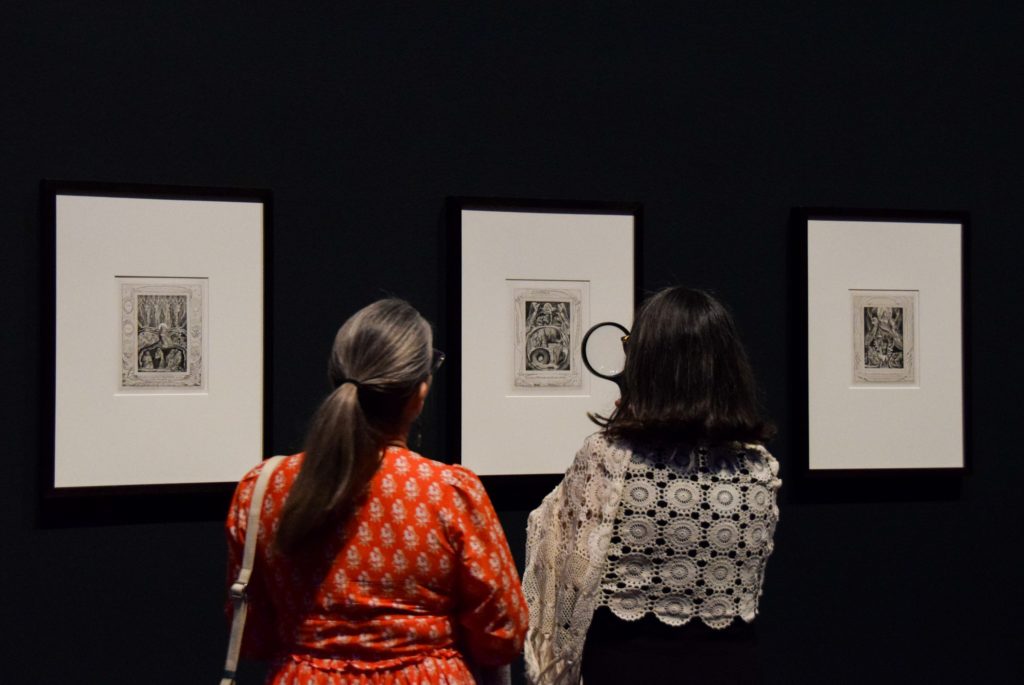
Throughout the exhibit, large text tiles were placed, graced with titles such as “Professional Printmaker,” “Independent Artist” and “Inventor.” These informational graphics helped audiences grasp the multifaceted nature of the artist, which Potts emphasized by mentioning the multitude of Blake’s artistic, political and personal pursuits in his opening comments.
“He was a very English phenomenon, around which an industry of artistic, literary and theological commentary and interpretation has arisen,” Potts said. “There is Blake the visionary poet, Blake the passionate – if dissident – spiritualist Christian … there is Blake the inventor of mythologies and prophecies, Blake the antiestablishmentarian, Blake the revolutionary sympathizer, Blake the devoted husband.”
Several large color prints graced the gallery walls, including “Satan Exulting over Eve,” which also graced the banner at the museum’s entrance. The painting features a devious, detailed rendering of Satan perched over Eve, who is entangled with a serpent. Beside this print hung “Hecate (or, The Night of Enitharmon’s Joy),” Blake’s rendering of the witch figure from William Shakespeare’s “Macbeth.”
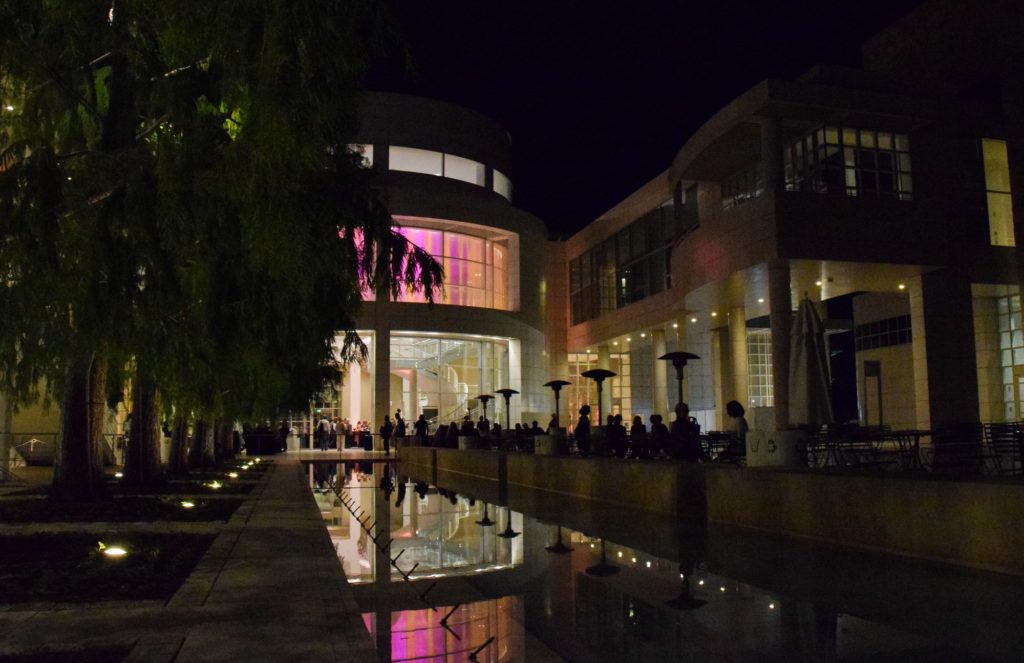
[Related: Photographers exhibit portraits of LGBTQ+ people and spaces in ‘Queering the Lens’]
Blake’s references to other texts were plenty, with one wall featuring a series of compositions retelling Dante’s “The Divine Comedy.” Another section spotlighted Blake’s recreations of the biblical Book of Genesis, completed in the last two years of his life. One watercolor painting, “Oberon, Titania, and Puck, with Fairies Dancing,” rendered Shakespeare’s characters in bright, fluid colors.
Further into the exhibition, audiences dove deeper into Blake’s personal mythology. Wall captions described Blake’s universe of characters, complemented by hanging illustrations. Various characters such as Albion, Jerusalem, Los, Enitharmon and Urizen graced the Getty Center’s walls, creating a visual representation of Blake’s spiritual expression. A series of drawings titled “Visionary Heads” also explored Blake’s reported experiences of visions, in which he interacted with spiritual figures. In his remarks, Brooks praised Blake’s sense of imagination as one of the appeals of his work, even hundreds of years after his death.
“The fact that he regarded imagination as the one and only – essentially, the greatest thing,” Brooke said. “I think that’s something we can all associate with and is something that really drives us all today and brings us all together in so many ways.”



